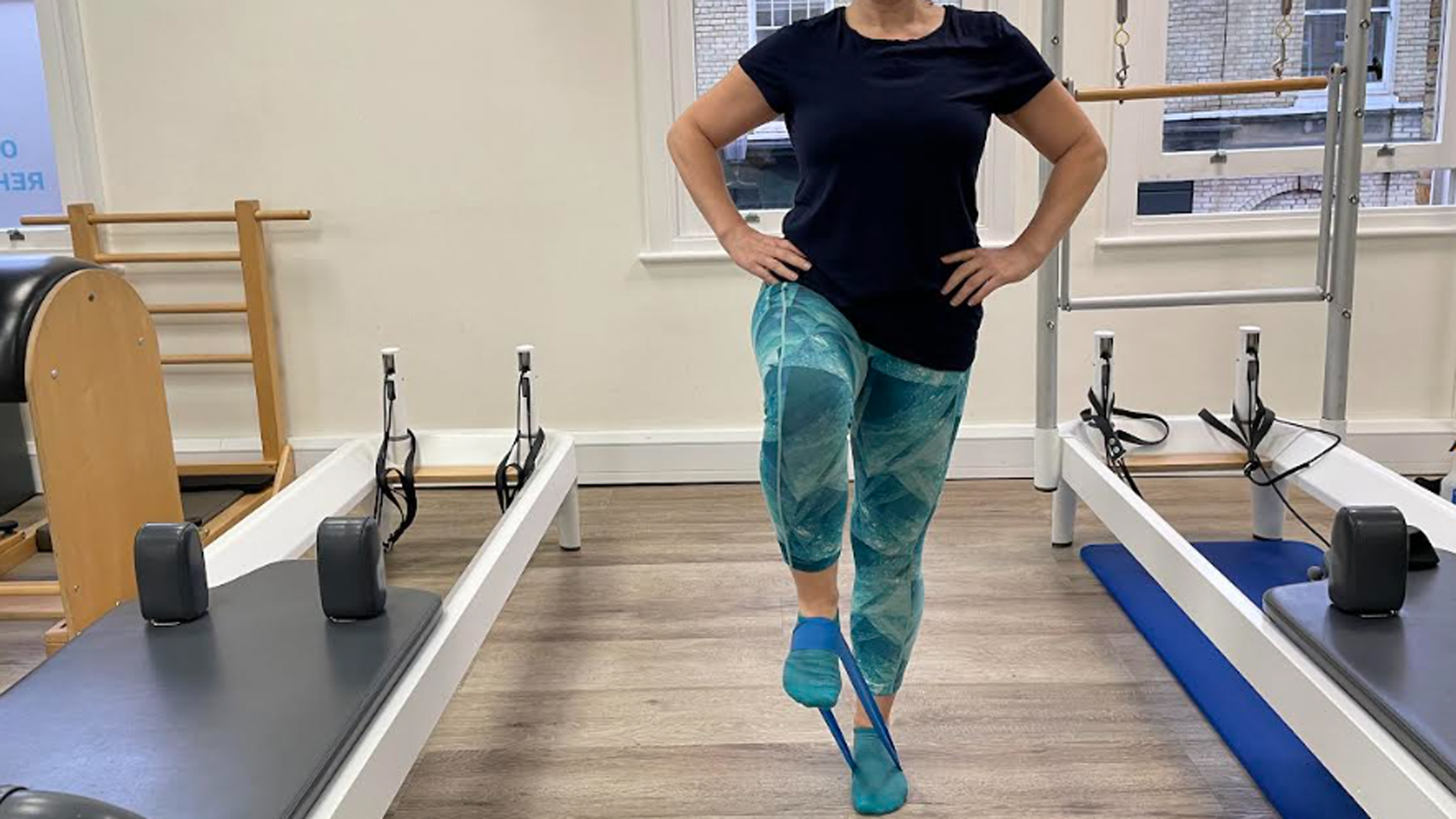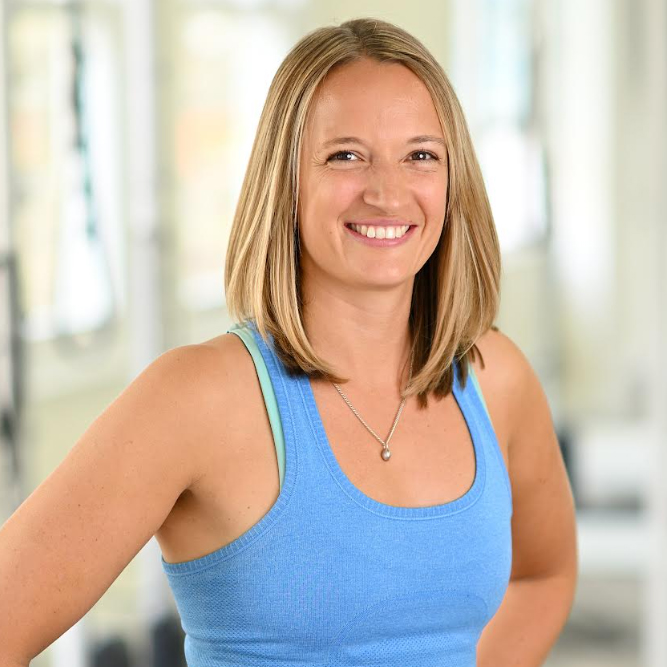Hip flexors: What are they, how to strengthen them and why you should
Unlocking the power of the hip flexors

Hidden within our core and pelvis, the hip flexor muscles are an unsung hero of our musculoskeletal system, quietly performing essential roles in our exercise regimes and daily lives. However, for many fit and healthy people, it's easy to underestimate their importance.
This is until an injury occurs or when mobility issues creep up with age. Recent research published in the Archives of Gerontology and Geriatrics has shed light on the critical role of hip flexors in our physical well-being. The study focussed on older adults and found that those with weaker hip flexors showed a decline in overall physical function, highlighting the crucial role of these muscles.
While this particular study focuses on older adults, no matter your age, weak hip flexors can affect young and active people too. In fact, it's something I've become acutely aware of as a runner, and it was only this year that I began including strengthening exercises, like kettlebell hip marches, in my fitness routine, in efforts to increase the resilience of my hip flexors.
If you want to learn more about the importance of hip flexors and how to strengthen them, stick with us.
What are hip flexors?
The hip flexors constitute a group of muscles located at the front of your hip, playing a pivotal role in your body's biomechanics. Their primary function is to lift your leg and knee upward toward your torso.
The hip flexor group consists of several individual muscles, but according to NASM Master Instructor Annie Malaythong, the three main ones are the Psoas major, rectus femoris, and iliacus.
5 hip flexor strengthening exercises
We spoke to Helen O'Leary, a chartered physiotherapist and Pilates instructor to find out what her what her favorite hip flexor exercises are. See below for instructions and images...
Get instant access to breaking news, the hottest reviews, great deals and helpful tips.
Thigh Stretch

- Come into a kneeling position on the floor, be sure to place some padding underneath you, such as one of the best yoga mats.
- Reach your arms in front of you.
- Press your shins and feet into the floor for your pelvis to move forwards.
- Hinge back from your knees, keeping your ribs and pelvis in line rather than going into extension.
- Pause at the back and then press into your shins to come back up again.
- Repeat for 5-8 reps.
Bulgarian Split Squat

- Take your back leg up onto a bench, box or chair if you are exercising at home.
- Make sure your legs are under your sit bones, if they are really narrow you will struggle to keep your balance.
- Keeping your torso upright, bend the knees to drop down into a lunge. You should feel a stretch in the back leg.
- Pause at the bottom before pressing to come back up again.
- Repeat 12 reps each side.
Straight leg raise

- Lay on your back with one leg bent, foot flat on the floor.
- Lift the other leg to table top and then extend the leg.
- Slowly lower it towards the floor and quickly lift it back up again.
- Repeat 20 reps each side
Standing hip flexion

- Standing with your hands on your hips and a band around your feet (the heavier the band the harder the exercise!).
- Pull your foot up towards your chest quickly, tightening the band.
- Slowly lower it back down again, keeping it away from the floor.
- Repeat 12 reps each side.
- TOP TIP: If you want more weight you can do this with your foot looped through a kettlebell. Check out our verdict on the best kettlebell if you are on the market for one.
Mountain climber with sliders

- Come into a plank position with sliders under both feet.
- Hold the position with your upper body and drag one leg in on the slider.
- Try and get your knee close to your chest.
- Switch legs over.
- Do 16 reps slowly and 16 reps quickly.
Benefits of strong hip flexors
Malaythong emphasized that the hips are essential for stabilizing your pelvis and spine during everyday activities. They play a crucial role in walking, standing, and various movements, providing the strength and support needed to minimize the risk of lower back injuries.
“Collectively, the hip flexor muscles work in synergy to enable the vital action of lifting your leg, whether it's stepping forward, running, or even the simple act of lifting your knee while walking,” Malaythong told us.
Take running, for example, the hip flexor muscles play an essential role in the generation of power and maintaining agility. When you're running, these muscles come to life with each stride you take.
As your foot pushes off the ground, the hip flexors, including the psoas major, iliacus, and rectus femoris, are responsible for initiating hip flexion. This action allows your thigh and knee to lift, driving the forward motion of your leg.
Other sports, such as soccer or gymnastics, can also exert significant strain on the hips, providing good reason to give some tender loving care to your hip muscles and help injury-proof yourself.

Helen O’Leary is a chartered physiotherapist and Pilates instructor/director of Complete Pilates in London. Helen graduated from Birmingham Unversity in 2008 and in 2010 completed her Polestar Pilates Rehabilitation course and began to teach both mat and equipment Pilates. Helen started her career as a physiotherapist in professional men’s rugby and with Cirque du Soleil before settling back in London to start her own business – Complete Pilates. After 13 years of dealing with acute trauma injuries as a physiotherapist, Helen, and Complete, work with clients before and immediately after surgery to optimise their recovery.

Annie Malaythong is a NASM Master Instructor, fitness business owner of Fitness Studio 108 in Atlanta, GA, mom and international presenter. She is all about motivating her clients to reach their full potential and producing serious results. A former pole vaulter once competing to represent the country of Laos in 2008 Olympics, she naturally fell in love with helping others to reach their full potential in mind, body and soul.
More from Tom's Guide
- I did a reverse snow angel every day for a week — here’s what happened to my body
- I test sneakers for a living — here’s my top 7 Black Friday Skechers deals starting at $33
- I'm a personal trainer — this is the best standing ab exercise that also torches your whole body

Jessica has been a fitness writer at Tom’s Guide since 2023, bringing three years of experience writing about health, fitness, and the great outdoors. Her passion for exercise began during her childhood, where she spent weekends hiking and competing in local athletics club events. After earning a master’s degree in journalism from Cardiff University, Jessica found the perfect way to combine her love of storytelling and fitness into a career.
Jessica is passionate about testing fitness gear and tech, using her reviews to help readers make informed buying decisions. She ran her first marathon in April 2024, finishing it in 3 hours and 48 minutes. Through her training, she’s developed a deep understanding of what it takes to grow as a runner, from effective workouts and recovery techniques to selecting the right gear for every challenge.
When she’s not at her desk, Jessica enjoys spending time in the kitchen crafting new recipes, braving cold water swims and hiking.
